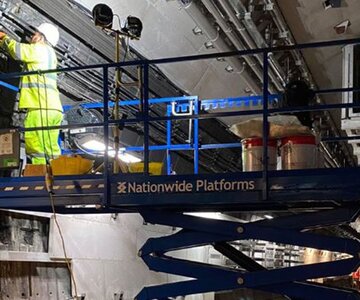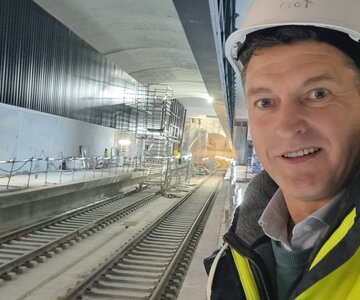Tunnels
Water leaks in tunnels are a major challenge requiring immediate attention. Not only existing tunnels require maintenance works for leak sealing, preventive waterproofing measures and initial crack and joint sealing using resin injections should also be taken into account when building a new tunnel. Ignoring water infiltration problems will increase the extent and cost, and can have serious consequences for both the structural integrity of the tunnel and the safety of its users. Tunnel service disruptions usually have a major impact on traffic and consequently the economy.
Water leaks usually occur as a result of gaps between tunnel elements, insufficient sealing of joint systems, concrete shrinkage, insufficient concrete coverage, incorrect positioning of reinforcement steel, honeycombs, unforeseen loads or heat generation, .... Ground erosion behind the tunnel wall can cause cracking of the concrete structure and stability problems. After a longer period of time, concrete deterioration and reinforcement corrosion may also occur, which reduce structural strength or may cause instability.
Especially the joints (pouring joints, construction joints, cold joints, and expansion joints) are parts that deserve extra attention when building a tunnel. Providing injection tube systems in advance or preventively has proven to be very effective in this regard.
They can be applied to a precast concrete section or casted into a joint prior to installation. After installation, they can be injected with low-viscosity polyurethane or acrylic resin in case of leakage. The injection tube system can be found under the SPETEC® preventive waterproofing solutions.
For soil stabilisation, filling larger cavities in soil or rock formations, or lifting subsided sections, refer to complementary injection methods under SPETEC® geotechnical solutions.
The following are some of the most common tunnel types for which SPETEC® injection resins are used, and the importance of protecting them in time against water infiltration and intervening immediately in case of water leaks: - Utility tunnels: contain critical infrastructure such as electrical wiring, water pipes and gas lines, which in contact with water can lead to corrosion of pipes and short circuits:
- Railway tunnels: are particularly sensitive to water leaks because of the electrical components and the high speed of trains. Indentation of water can damage the track bed, and sagging of the tracks.
- Metro tunnels: are usually located under busy urban areas, and are sensitive to water leaks from surrounding soil and existing utility lines. Leaks can disrupt services and lead to delays and higher maintenance costs.
- Road tunnels: are sensitive to water leaks from both the tunnel walls and the roadway. Water accumulation can cause dangerous driving conditions, leading to accidents and traffic jams.
- Pedestrian tunnels: water stagnation can cause slipperiness or inaccessibility, and the humid environment can become a breeding ground for mould and bacteria.
- Utility tunnels: contain critical infrastructure such as electrical wiring, water pipes and gas lines, which in contact with water can lead to corrosion of pipes and short circuits.
- Railway tunnels: are particularly sensitive to water leaks because of the electrical components and the high speed of trains. Indentation of water can damage the track bed, and sagging of the tracks.





